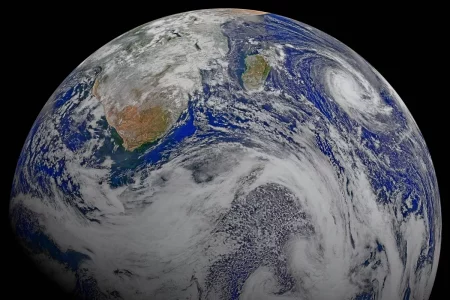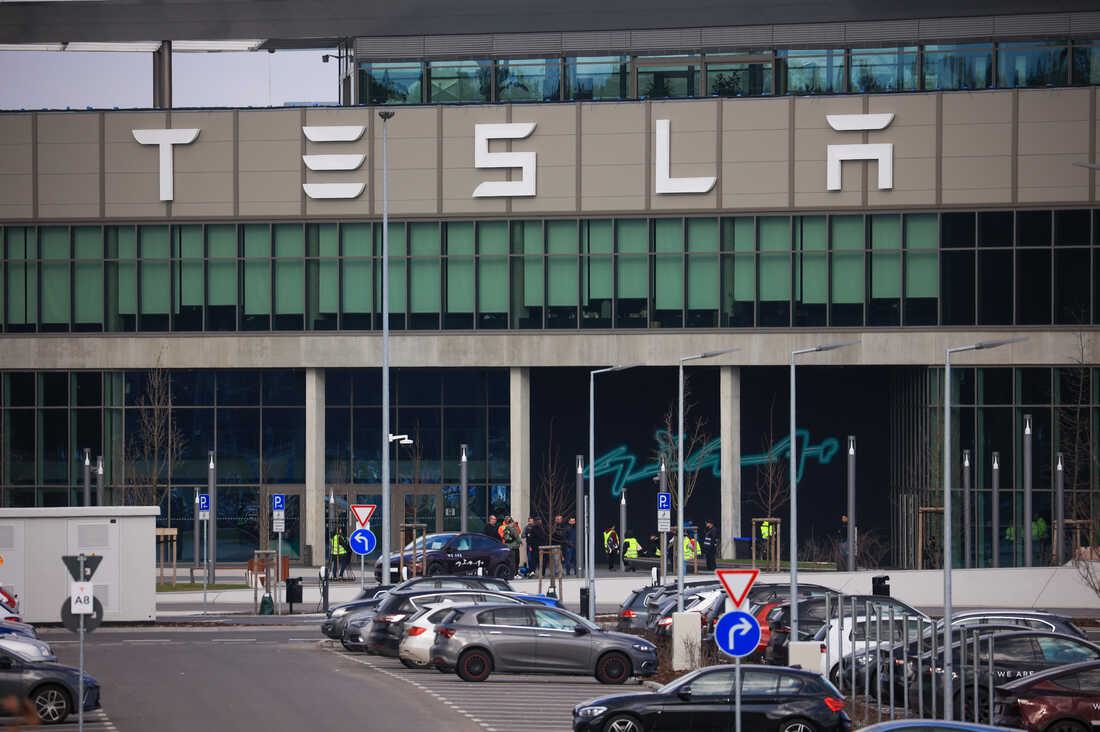Can carbon capture reverse climate change? It has to. - Dispatch Weekly
November 16, 2020 - Reading time: 7 minutes

If we stop emitting greenhouse gases today, the Earth will warm for centuries to come, and Arctic ice and permafrost are already on an irreversible path to melting. That’s according to new research published Thursday in the journal Scientific Reports.
Over time, both methane and carbon dioxide sustain warming, and models suggest that even if emissions fell to zero this year, global temperatures would still rise by 1850.
“The tundra will continue to melt over the next 500 years – irrespective of how quickly humanity cuts its greenhouse-gas emissions,” Jorgen Randers, the lead author of the new study. To stop this cycle, Randers says, we need to suck all the carbon dioxide back into the atmosphere.
8 feet of sea-level rise
Randers’s study modelled the effects of climate change on sea levels – an increase over the next 100 years. The data show that when emissions finally stop by 2020, sea levels in 2500 countries will be 2.5 metres higher than in 1850.
The Trump administration announced an expanded diplomatic presence in Greenland and a new aid package for the vast island, aimed at thwarting growing Chinese and Russian influence in the Arctic. The announcement came after President Donald Trump drew ridicule for expressing interest in buying Greenland.

Even before much of the public understands the reality of climate change, a climactic point is sweeping the earth without return. Models say that greenhouse gas emissions must be stopped to avoid a projected rise in temperature of 2 degrees Celsius above pre-industrial levels.
“Yes, that is an irony,” Randers said. “But of course the scientific community knew about global warming already in the 1960s.”
We need to suck carbon out of the atmosphere
The Paris climate agreement has decided that greenhouse gas emissions must be reduced to a level that will not increase temperatures by more than 2 degrees Celsius by 2100. But even if emissions were stopped before 2100, sea levels in Rander’s model would be nearly 3 meters higher than in 1850.
Earth’s temperatures are already on track to miss the Paris Agreement’s targets, and last year was the warmest on record for global temperatures in the last 100 years. Polar melt is likely to raise the sea by a metre by 2100 and threaten to displace hundreds of millions of people.
What’s needed, Randers said, is for companies and governments to “start developing the technologies for large-scale removal of greenhouse gases from the atmosphere.”
The total amount of carbon dioxide emitted by the global fossil fuel industry in 2018 is more than twice the world’s total annual greenhouse gas emissions. To prevent further warming before emissions are stopped, at least 1.5 billion tons of CO2 would need to be sucked out of the atmosphere every year, according to a new study. Technically, this strategy is known as carbon capture and storage (CCS).
Some power plants in the US, Canada and Switzerland have already started using CCS to reduce their carbon emissions. In 2014, the Boundary Dam Power Station in Saskatchewan was the first power plant in the world to successfully equip itself with this technology.
In the US alone, 21 commercial carbon capture projects are in operation, according to the US Department of Energy. These projects store carbon in depleted oil and gas fields in bioreactors or tanks filled with algae that eat carbon dioxide.
Two US separations, due to be completed in 2017, can capture 1.5 million and 2 million tonnes of CO2 per year, respectively. The study’s authors write that 33,000 large CCS plants would be built and kept running forever. This is more than twice the amount of CO2 that the current plan, which requires 2.2 billion tons of carbon dioxide emissions by 2050, requires to be removed from the atmosphere.
The pros and cons of geoengineering
Carbon capture is widely accepted as a safe and potentially effective form of geoengineering, but other climate interventions are increasingly being touted by scientists and policymakers alike. Andrew Yang, a Democratic presidential candidate, has proposed to allocate $1.5 billion of his campaign funds to promote geoengineering research. But most climate-change proposals used to hack data would be much riskier than CCS, and scientists, policymakers, and climate scientists are increasingly courting other, more cost-effective forms of mitigation and mitigation.
Take, for example, geoengineering, where aerosols are sprayed into the sky to reflect sunlight into space. Critics of the idea point out that most models would not predict the impact of solar geoengineering locally, and that the impact would be different and unpredictable if a country chose such measures.
For example, a spray can be used in the southern hemisphere could affect ocean temperatures and wind speeds and lead to more hurricanes in our northern hemisphere. Randers says his study favours the use of geoengineering only in some countries, such as the United States and China, but not in the rest of the world. And unlike carbon capture, solar geoengineering has geopolitical implications, Michael O’Rourke, an associate professor at Waterloo University who studies geo-engineering, previously told Business Insider.
Opponents of geo-engineering generally believe that it not only has unintended side effects but is also potentially harmful to health.
As an immediate priority, countries should invest equally in reducing emissions and building more CCS plants, Randers said.
\As the world continues to delay meaningful and feasible steps to phase out fossil fuels, geoengineering may have to be used, he said. He said there was no need for a government-funded by a Green New Deal, or even some kind of carbon tax.

DW Staff
David Lintott is the Editor-in-Chief, leading our team of talented freelance journalists. He specializes in covering culture, sport, and society. Originally from the decaying seaside town of Eastbourne, he attributes his insightful world-weariness to his roots in this unique setting.




